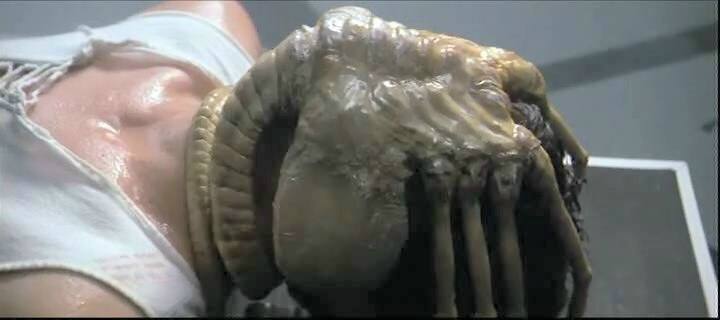When
discussing Alien in class the idea
that movie’s monsters are simply allegorical references to our own fears was hinted
at and was consequently stuck in my head. Initially, I didn’t see very far past
the shell of a horror movie that ascribed to its genre: scary movies. Upon
viewing it a second time, though, certain thematic points became much clearer. I’d tried to follow along with the generally
sexually driven theme that had been hinted at in class, but didn’t feel as if I
found much of an overarching purpose behind it; obviously certain parts clearly
were sexually driven, but I never felt that I could see a larger unifying drive
behind these scenes in that light. For example, the scene where the Alien is
first presented to us as a face-sucking entity on the face of the stranded
astronaut; the reference to fellatio is far from subtle, but I also saw the
value in this scene as portraying the Alien as, simultaneously, sustaining and
draining the life force from him.


In this way the classic notion of Alien probing is put onto the Alien; for the most part the Alien's main mode of destruction is through probing. The comparisons can go even deeper, though, when thinking about what was the vehicle through which the crewmates came to face these issues; and the vehicle is "Mother", a spaceship owned by the Company with ulterior motives to those onboard. By placing the parasitic role on both the Alien and the Company, our inherent fear of being taken advantage of is exploited in the explicit and sexual senses. Similar to the mode in which the Company has used there lives expendably in the name of its own advancement, so too has the Alien acted parasitically by eliminating the crew in the name of its continued advancement. The entire theme of advancement in the name of all else is made clear by the cut throat nature of the mission in which they'd embarked, as made clear when they were initially arguing about what the fair compensation for their work would be; only for them to be told that it was out of their hands and beyond them, in the same way the mission as a whole was out of their hands and beyond them. Their mission wasn't one of status or intrinsic, goodwill value. Rather those onboard were there for the same reason the ship that was taking them was, profiteering.